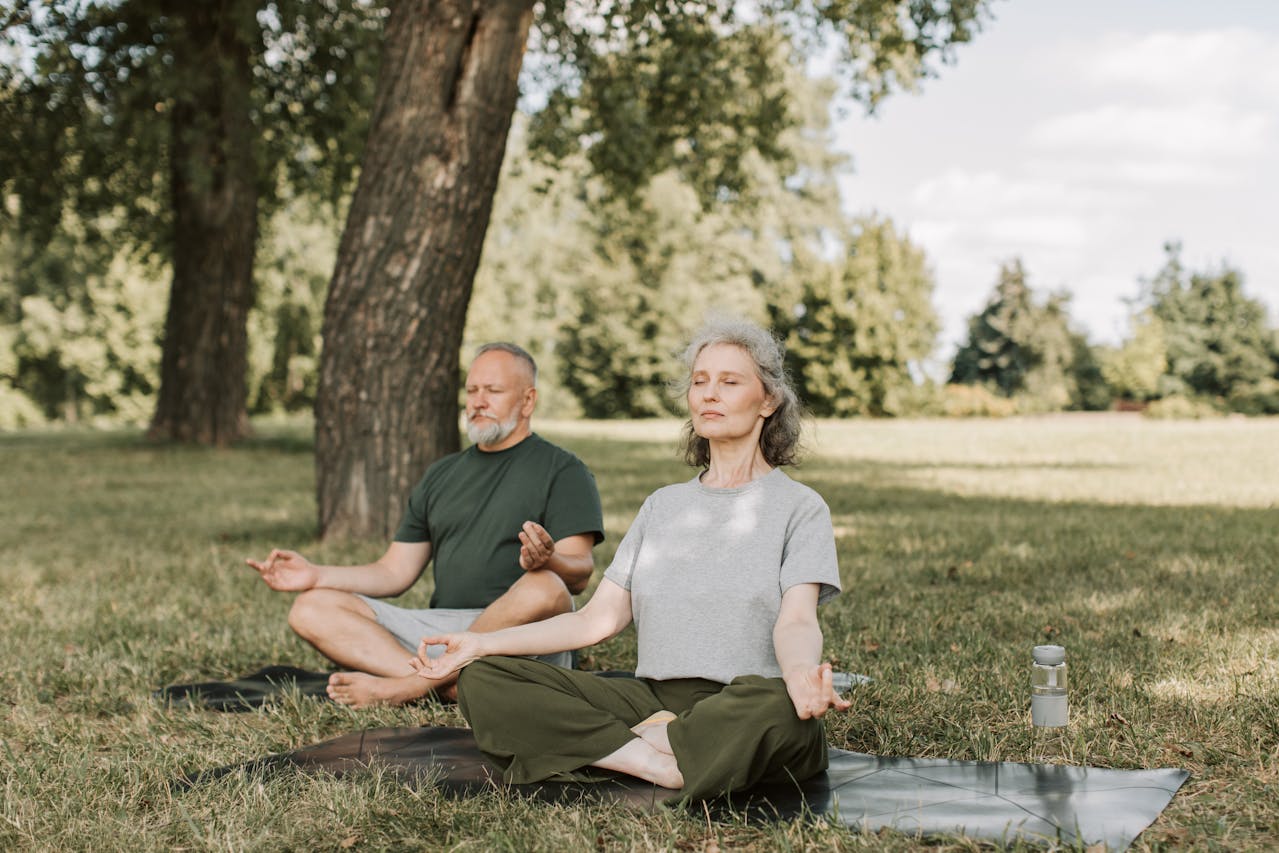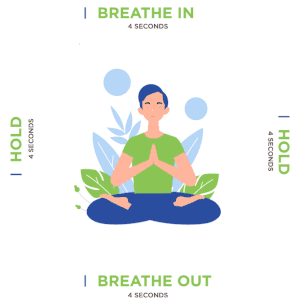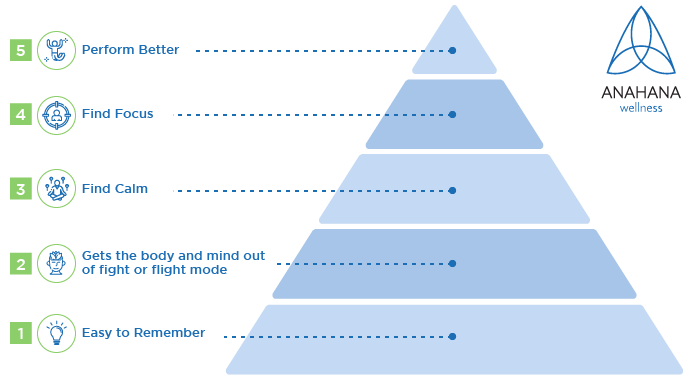
Table of Contents
There is a reason why everyone from Navy Seals, elite athletes, and stressed-out parents use this breathing style.
Origin of Box Breathing
Box breathing, also known as square breathing or four-square breathing, is a technique that has been used for centuries, though it has only recently been popularized in Western cultures. Its structured pattern is akin to practices found in ancient meditation and yoga, emphasizing controlled breaths to enhance mental, physical, and spiritual well-being.
This technique gained prominence as it was adopted by Navy SEALs to manage stress in high-stakes environments, helping them maintain calm and focus during operations.
The simple, symmetrical pattern of box breathing makes it easy to remember and utilize in high-pressure situations. This is likely why it has also been embraced by elite athletes and professionals in high-stress environments.
The name 'box breathing' underscores this simplicity, as it visualizes the four equal sides of a square, each side representing one part of the breath cycle. This method serves as a mental anchor, making it an effective tool across various stressful scenarios, providing a quick and efficient way to regain control over one’s physiological and psychological responses.
How Box Breathing Works
Square breathing, also called box breathing works by directly impacting the autonomic nervous system, which controls the body’s response to stress. This is one of many deep breathing techniques that focuses on deep, slow breathing, which encourages the body to shift away from the fight-or-flight response of the sympathetic nervous system and engage the parasympathetic nervous system, often referred to as the "rest and digest" system.
This shift helps to lower blood pressure, reduce stress hormones like cortisol and adrenaline, and decrease the overall number of breaths per minute, promoting a state of calm.
Physiologically, the act of taking deep breaths increases the supply of oxygen to your brain and stimulates the parasympathetic nervous system, which promotes a state of calmness, helping to improve focus and regulate stress.
The mental benefits of this controlled breathing helps to clear the mind, improve concentration, and boost mental clarity. By holding the breath, the body accumulates carbon dioxide, which helps to regulate the nervous system and encourage relaxation and which is why so many uses this as one of their primary relaxation techniques, helping managing stress.
Incorporating box breathing into the daily life can be particularly beneficial in managing stress, enhancing overall mental health, and maintaining emotional balance. It serves not only as a powerful relaxation technique but also as a means of improving one’s mental well-being and focus in both personal and professional spheres.
Practicing box breathing can help integrate these benefits into everyday life, allowing individuals to improve their stress response, reduce the production of cortisol, the stress hormone, foster body awareness, and live more present and focused lives.
Learn Box Breathing
Box breathing has become a go-to breathing technique in recent years for a lot of great reasons.
What is box breathing? Here are the basics:
- Inhale through the nose for 4 seconds.

- Hold for 4 seconds.
- Exhale for 4 seconds.
- Hold for 4 seconds.
Rinse, repeat.
If you only have time to do 4 cycles, in about 2 minutes you’ll feel the difference. Even better, if you can get in 5 minutes or more, you will get even more benefits.
Now that’s you’ve got the basics, let’s take a look at how this easy breathing exercise will help you out.
Benefits of Box Breathing
-
Easy to Remember - the whole idea behind the name box breathing is to make it easier to remember under pressure. So you can call it box breathing, square breathing, 4*4 breathing, or whatever is easiest for you. There are a lot of great exercises out there for different uses, but you can think of Square Breathing as the jack of all trades, and can get the job done in all situations.
-
Gets the body and mind out of fight or flight mode - when you are stuck in fight or flight, it is harder to focus; you may feel anxious and jumpy. This obviously isn't ideal for a lot of reasons, like making it harder to make good decisions, get dialed in, and breathe efficiently. Box breathing will help lower your heart rate, blood pressure, breaths per minute, and even lower the stress chemicals in your body.
-
Find Calm - that's right, when we get out of fight or flight, we feel calmer, less stressed, and less jumpy. All those stress hormones in the body such as adrenaline, and cortisol serve important purposes, but if they show up at the wrong time, such as when we are under excessive pressure, it can lead to missed shots, bad decisions, volatile emotions.
-
Find Focus - When we are less stressed it is much easier to focus on the mission at hand, whether on the battlefield, on the court, or in the boardroom. Here is where a proper stress management technique comes in handy. When your heart rate slows down, it tells your body that you are safe and there is no need to be worried about the threat lurking. This lets your brain direct all of your attention to the task at hand.
-
Perform Better- it's no secret; if you can’t focus you can’t perform your best. When you are able to concentrate and cut out all of the noise, not only does the job gets done, the job gets done better.
As you can see, all of these benefits build on each other like the solid foundation of a pyramid; building from the breath to the systems of the body, to the brain, and finally, how we act in the real world.
Perform at Your Best
"Breathing is a lost art and science," according to NY Times best-seller James Nestor. If you aren't using box breathing, or other techniques daily, you aren't performing at your best- and you definitely aren't living your best life if you aren't breathing properly.
REFERENCES
https://www.health.harvard.edu/staying-healthy/take-a-deep-breath
https://time.com/4316151/breathing-technique-navy-seal-calm-focused/
https://www.ncbi.nlm.nih.gov/pmc/articles/PMC5455070/#__ffn_sectitle
https://www.health.harvard.edu/staying-healthy/understanding-the-stress-response
Disclaimer
The contents of this article are provided for informational purposes only and are not intended to substitute for professional medical advice, diagnosis, or treatment. It is always recommended to consult with a qualified healthcare provider before making any health-related changes or if you have any questions or concerns about your health. Anahana is not liable for any errors, omissions, or consequences that may occur from using the information provided.

By: Clint Johnson
Clint is the driving force and founder of Anahana. Clint teaches Yoga, Pilates, mindful breathing, and meditation, catering to a global community of students and teachers.

